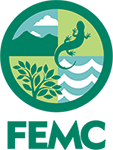Forest Research at Harvard Forest: Deer and Moose Browsing in Hemlock Removal Experiment at Harvard Forest 2008
Download MetadataView Metadata in XML Format
► Metadata Provider
- Forest Ecosystem Monitoring Cooperative
- Address:
705 Spear Street
South Burlington, Vermont 05403
United States of America
Phone: (802) 391-4135
Email: femc@uvm.edu
Website: www.uvm.edu/femc
► Abstract
Since 1907, the Harvard Forest has served as a center for research and education in forest biology and conservation. The Forest's Long Term Ecological Research (LTER) program, established in 1988 and funded by the National Science Foundation, provides a framework for much of this activity.
► People
- Emery Boose: Principal Investigator
► Organizations
- Harvard University Harvard Forest: lead
- Duke Forest : partner
► Geographic Coverage
- Coordinates
► Data Table
- Title: Deer and Moose Browsing in Hemlock Removal Experiment at Harvard Forest 2008
- Start Date: 2008-01-01
- End Date: 2008-12-31
- Description: Hemlock decline in New England is caused by direct and indirect effects of invasion of the hemlock woolly adelgid. Direct damage from the insect is causing gradual mortality of hemlock. Widespread harvesting of hemlock in advance of mortality, in contrast, causes immediate mortality and removal of biomass from the site. Although both processes affect thousands of acres of forest annually we have only a limited understanding of their effects on forest ecosystem function and productivity and the nature of the subsequent forest community. We anticipate that harvesting will yield different consequences than gradual mortality from the insect. Therefore we designed an experiment to simulate these contrasting impacts, by logging or girdling hemlock stands. Results from the experimental treatments will be compared to the changes observed in forests that are being infested by the adelgid, and can also be included in integrated analyses of a suite of large experiments that form a core component of the Harvard Forest LTER program. Deer and moose foraging can play a key role in shaping forest regeneration after disturbance in temperate forest. In 2008, we initiated a browsing survey of woody stems in the Simes hemlock removal experiment plots. There are regular moose sightings in the study area, and moose pellets are commonly found within the plots. Also, extensive browsing of tree regeneration in the logged plots was Noted starting in 2007.
- Purpose: Monitor the role deer and moose browsing plays in shaping forest regeneration after a pest or harvesting disturbance.
- Condensed Title:
- Object Name: VMC.1387.2835
- Data Type: mySQL
- Citation: Ellison A, Barker Plotkin A. 2009. Deer and Moose Browsing in Hemlock Removal Experiment at Harvard Forest 2008. Harvard Forest Data Archive: HF124. Available at: https://harvardforest1.fas.harvard.edu/exist/apps/datasets/showData.html?id=HF124
- Online Distribution: https://vmc.w3.uvm.edu/vmcdevel/data/archive/project/Harvard_Forest_Research/dataset/deer-moose-browsing-hemlock-removal-experiment
► Attribute List
- Attribute Name: species
- Label: Species field in the HF Deer and Moose Browsing dataset
- Description: Species field in the Harvard Forest Deer and Moose Browsing in Hemlock Removal Experiment dataset (hf115)
- Storage Type: text
- Measurment Type: nominal
- String Format: D-M-YY
- Number Type: -1
- Species List: Deer and Moose Browsing in Hemlock Removal Experiment at Harvard Forest 2008
- Code: BELE/BEAL
- Definition: ITIS #19481, yellow birch (Betula alleghaniensis)
- Code: TSCA
- Definition: ITIS #183397, Canada hemlock; hemlock spruce (Tsuga canadensis)
- Code: ACRU
- Definition: ITIS #28728, red maple (Acer rubrum)
- Code: PRPE
- Definition: ITIS #24799, pin cherry (Prunus pensylvanica)
- Code: BEPA
- Definition: ITIS #19489, paper birch (Betula papyrifera)
- Code: UNK
- Definition: ITIS #823, (Radiocystis )
- Code: QURU
- Definition: ITIS #19408, northern red oak (Quercus rubra)
- Code: ILMU
- Definition: ITIS #835359, catberry (Ilex mucronata)
- Code: ILVE
- Definition: ITIS #27985, common winterberry (Ilex verticillata)
- Code: PRSE
- Definition: ITIS #24764, black cherry (Prunus serotina)
- Code: VASP
- Definition: ITIS #817914, (Vallisneria spiralis)
- Code: PIST
- Definition: ITIS #183385, eastern white pine (Pinus strobus)
- Code: DILO
- Definition: ITIS #35310, northern bush-honeysuckle (Diervilla lonicera)
- Code: SAPU
- Definition: ITIS #22574, purple willow (Salix purpurea)
- Code: QUAL
- Definition: ITIS #19290, white oak (Quercus alba)
- Code: LOSP
- Definition: ITIS #34532, pale-spike lobelia (Lobelia spicata)
- Code: QUVE
- Definition: ITIS #19447, black oak (Quercus velutina)
- Code: HAVI
- Definition: ITIS #19033, witch-hazel; witchhazel; American witchhazel (Hamamelis virginiana)
- Code: COCO
- Definition: ITIS #19507, beaked hazel (Corylus cornuta)
- Code: FAGR
- Definition: ITIS #19462, American beech (Fagus grandifolia)
- Code: VIAC
- Definition: ITIS #35255, mapleleaf viburnum (Viburnum acerifolium)
- Code: RHNU
- Definition: ITIS #23700, azaleas (Rhododendron sp.)
- Code: CASP
- Definition: ITIS #19223, hickory spp (Carya sp.)
- Code: VACO
- Definition: ITIS #23573, highbush blueberry (Vaccinium corymbosum)
- Code: QUSP
- Definition: ITIS #19276, oak (Quercus sp.)
- Code: ACSA
- Definition: ITIS #28731, sugar maple (Acer saccharum)
- Code: ACPE
- Definition: ITIS #28754, striped maple (Acer pensylvanicum)
- Code: CADE12
- Definition: ITIS #19454, American chestnut (Castanea dentata)
► Methods
- No methods recorded for this dataset
► Sampling Equipment
- No sampling equipment recorded for this dataset
► Site Characteristics
- No site characteristics recorded for this dataset

